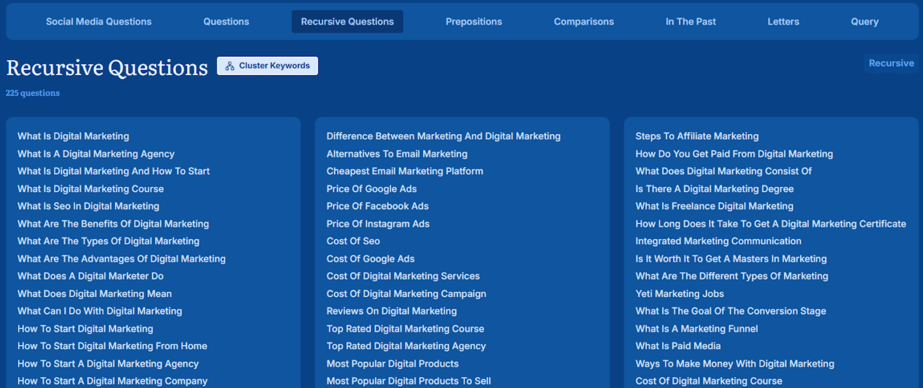When writing a blog, the real struggle isn’t filling pages, it’s finding topics your audience actually cares about, so ditch generic updates and start with what people are searching for.

Running a business blog feels like a constant challenge. You know you need fresh content to drive traffic, engage customers, and boost SEO. But staring at that blank page wondering “what should I write about?” is exhausting, especially when you have a to-do list with 15 other items on it.
I’ve found the real problem isn’t finding things to write about, it’s finding topics my audience genuinely cares about. Too many blogs are filled with content that serves nobody: generic industry updates, company announcements that matter to no one outside the business, or rambling thoughts published just for the sake of it. And now with AI, anyone can quickly provide a prompt, and get an easy 750-word post written for them. But that doesn’t mean anyone will read or engage with your content.
The solution? Start with what people are actually searching for, and build your content around that.
Here are five tools and strategies you can use to make sure your blog is interesting and relevant enough that people actually want to read it.
1. Answer Socrates: a content goldmine
Answer Socrates should be your first stop for blog ideas. This free tool reveals the exact questions people type into Google about your industry or topic.
Simply enter a keyword related to your business or painpoints your users or ICPs are likely to be searching about, and Answer Socrates generates hundreds of real search queries. These aren’t made-up questions; they’re what your potential customers or clients are actively looking for answers to.
For example, if you run a marketing agency, searching “digital marketing” reveals questions like “what does a digital marketing agency do”, “what is a marketing funnel”, and “when to do digital marketing”. Each question is a potential blog post that serves real search intent and can expand into social media posts.
The beauty of Answer Socrates is that it takes the guesswork out of content planning. Instead of assuming what people want to read, you’re responding to demonstrated demand.
2. Mine your customer support enquiries
Your customer support inbox is a treasure trove of content ideas. Every question customers ask is a signal that others probably have the same confusion.
Keep a running list of common queries. Questions about pricing, processes, troubleshooting, or comparisons between products all make excellent blog topics. Not only do these posts help reduce future support tickets, but they also capture people at different stages of your sales funnel.
If customers frequently ask “how often should I replace my…”, that’s a blog post opportunity. If they’re confused about one of your services, explain it in detail with examples.
3. Turn your calendar into content
Your upcoming events, seasonal changes, and industry calendar moments are natural content hooks. But instead of just announcing what’s happening, create content around the topics these events represent.
If you’re attending a conference, write about the key trends being discussed. If there’s a seasonal peak in your industry, create content addressing the challenges or opportunities that season brings. Tax season for accountants, wedding season for photographers, or back-to-school period for education services all offer natural content angles.
Look at your calendar three months ahead and identify moments where your audience might need specific information or guidance.
4. Address the questions hiding in your sales conversations
Your sales team hears objections, concerns, and questions daily. These conversations reveal exactly what prospects are thinking about before they buy.
Common objections like “How is this different from competitors?” are perfect blog topics. Write posts that address these concerns head-on with evidence, case studies, or detailed explanations.
If prospects often ask about implementation timelines, write about what the process actually looks like. If they’re concerned about ROI, create content showing real results and realistic expectations.
5. Create content around your data and observations
You have unique insights from running your business that others in your industry don’t. Your experience with customers, trends you’ve noticed, or problems you’ve solved differently all make compelling content.
Maybe you’ve noticed that 80% of your customers make the same initial mistake. That’s a blog post about avoiding that pitfall. Perhaps you’ve identified a gap in how your industry typically handles a common situation. Share your approach.
This type of content positions you as a thought leader while providing genuine value based on real experience rather than recycled information.
The key to content that works
The thread connecting all these approaches is simple: start with real problems, questions, and needs rather than what you think you should write about.
Your blog should exist to serve your audience, not to fill space or tick a content marketing box. When you focus on answering genuine questions and solving actual problems, you create content that people actively seek out and share.
Stop guessing what your audience wants to read. Start listening to what they’re already telling you they need.
If you would like support in improving your SEO, please feel free to contact us directly to learn more about our services.





